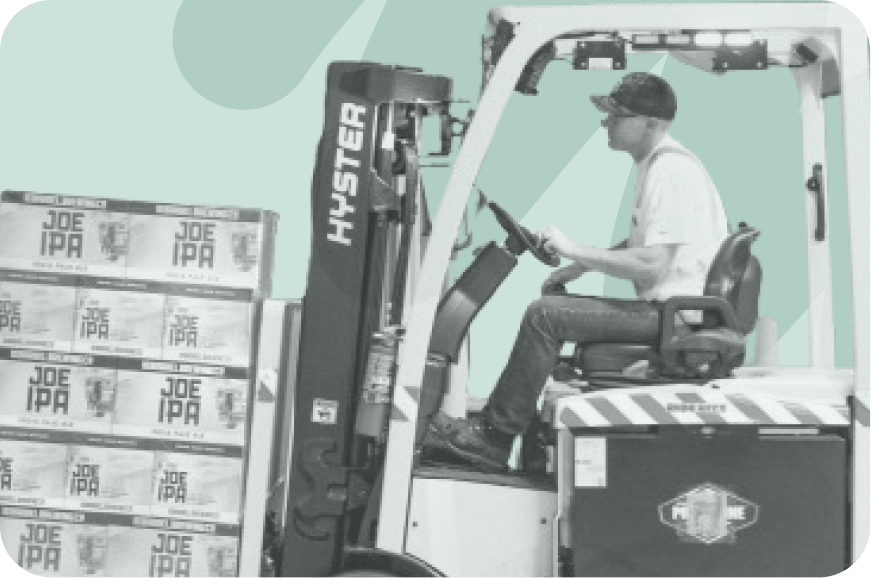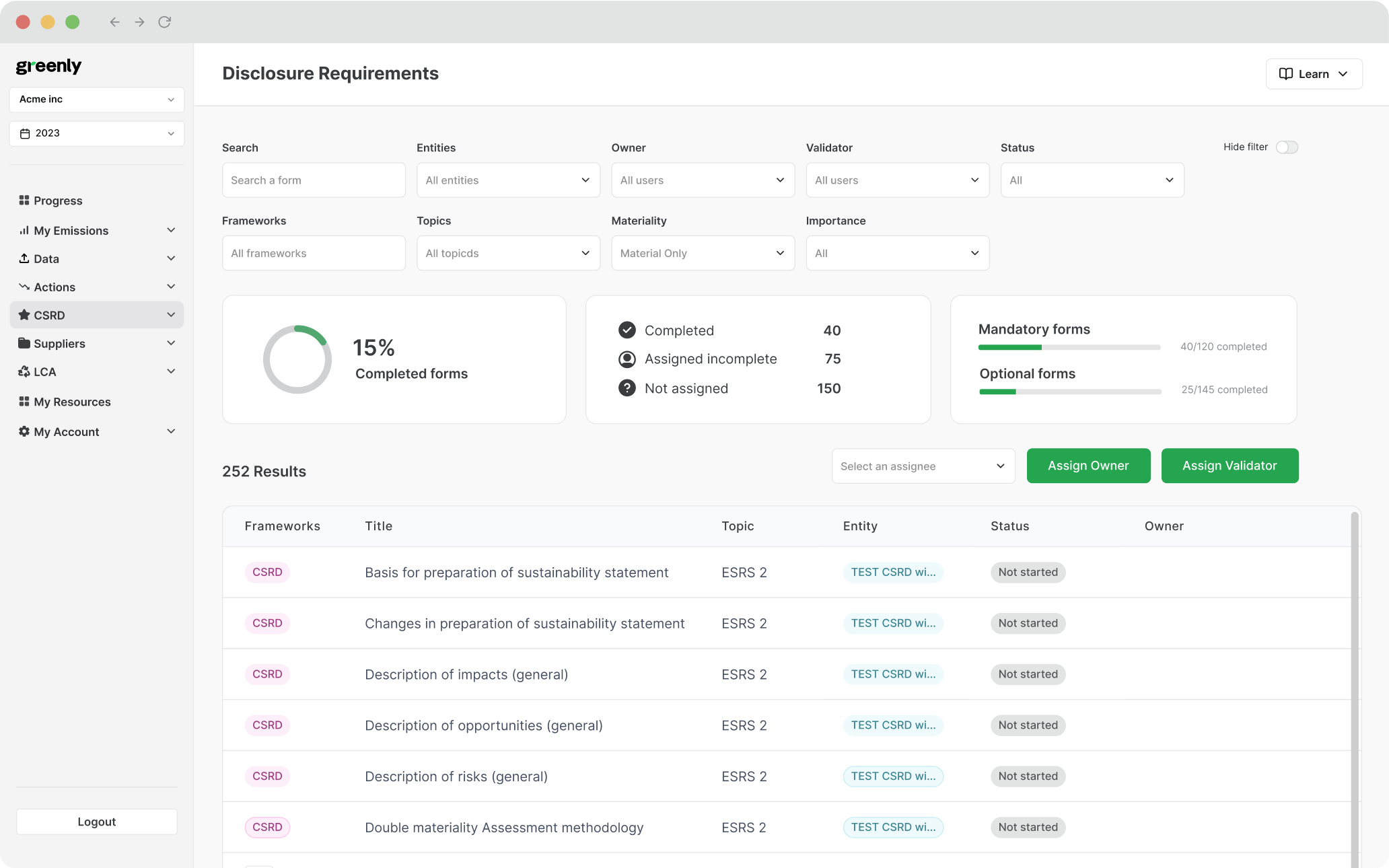
What are the 3 Pillars of Corporate Sustainability?
In this article, we'll explore what the 3 pillars of corporate responsibility are, why they're important, and how businesses can turn them into practical action.
ESG / CSR
Industries



Not long ago, sustainable procurement was treated as an optional add-on rather than a core business function. It sat outside the main business priorities and was rarely integrated into day-to-day decision-making.
That has since changed. Climate impacts, supply chain risks, and growing expectations from regulators, investors, and customers have pushed procurement to the centre of sustainability efforts.
A clear, sustainable procurement strategy is no longer simply reassuring; it’s expected. Companies that fail to demonstrate credible practices risk losing out on contracts, partnerships, and long-term competitive advantage.
Make sure your company doesn’t fall behind! Keep reading our sustainable procurement guide to understand what’s expected, what’s changing, and how to get it right.
What sustainable procurement is and how it differs from traditional procurement
Why it matters for supply chain emissions, ESG, and compliance
The key business benefits: cost savings, risk reduction, and brand value
Practical steps to implement a sustainable procurement strategy
Sustainable procurement is the process of acquiring goods and services in a way that balances operational needs with environmental and social responsibility. It goes beyond cost and efficiency to ensure that suppliers, materials, and sourcing practices minimise negative impacts and protect resources.
In practice, it means integrating sustainability criteria into purchasing decisions: everything from how materials are sourced and produced, to how they’re transported, used, and disposed of across your entire supply chain.
The main difference between procurement and sustainable procurement is that procurement is primarily concerned with acquiring goods and services to ensure the best quality and financial return, whereas sustainable procurement also values ESG factors.
Real-life examples of sustainable procurement include things like purchasing renewable energy, sourcing recycled raw materials, using other organisations' waste and byproducts, selecting local suppliers to cut down on transport emissions, partnering or financing to implement sustainability improvements to the supply chain...
There are many reasons why sustainable procurement is important - economic, ethical, and social reasons - but one of the most significant is the impact of a company's supply chain on the environment and natural resources.
Global warming is one of the biggest challenges that we face as a society today, and governments, businesses, and individuals around the world are all being asked to play their part as we work towards reducing greenhouse gas emissions and preventing global warming.
Sustainable procurement is therefore not just a ‘nice to have' – it's becoming a necessity.
The good news is that sustainable procurement also brings with it many advantages and opportunities for businesses. Let's take a look at some of these in the next section.
Sustainable procurement isn’t just about doing the right thing for the planet. It also helps sharpen brand reputation, reduce supply chain risks, support compliance, and strengthen your overall CSR strategy - all of which can give your business an edge.
ESG is a compulsory part of sustainable procurement. This is because, in addition to the financial and performance aspects of procurement, companies must consider the impacts of procurement decisions on local communities, the environment, and society as a whole.
Sustainable procurement should fit the reality of how your business operates - budgets, timelines, suppliers, and all. But even with those constraints, ESG basics still need to be there: environmental impact, labour standards, and how responsibly suppliers are governed.
At its core, sustainable procurement is ESG applied to real choices: who you buy from, how things are made, and the impact those decisions leave behind. When you factor in the environmental and social side of your supply chain, CSR becomes visible in your day-to-day operations, not just in your reporting.
To be successful with sustainable procurement, your company should invest the time and resources to develop suitable policies under the umbrella of its wider CSR strategy. This might mean starting from scratch or that you have to re-evaluate existing processes and identify areas for improvement.
Implementing a sustainable procurement system can seem like a daunting task, but with a structured approach, supply chain managers can integrate sustainability into their procurement processes effectively. Here’s a step-by-step guide to help you get started:
Step 1: Assess current procurement practices Begin by reviewing how you buy today. Identify where sustainability could be integrated and look at the environmental and social impacts of your existing supply chain. This gives you a baseline for your sustainable procurement strategy.
Step 2: Develop a sustainable procurement policy Create a clear policy that sets out your sustainability goals, supplier selection criteria, and expectations. It should align with your wider CSR objectives and be easy for teams and suppliers to understand.
Step 3: Engage stakeholders and build internal support Bring procurement teams, senior leaders, and other key departments into the conversation early. Their buy-in is essential if the policy is going to be applied consistently and not sit on a shelf.
Step 4: Evaluate and select suppliers Assess existing and potential suppliers using sustainability criteria such as environmental impact, social responsibility, and ethical practices. Prioritise those who align with your goals and consider switching to more sustainable options where needed.
Step 5: Set clear sustainability criteria Define specific requirements for materials, products, and services — for example, lower-carbon materials, energy-efficient products, or social standards. Make sure these criteria are written into contracts and procurement documents.
Step 6: Collaborate with suppliers Treat suppliers as partners. Share your sustainability goals, explain what you’re looking for, and offer support or resources where possible so they can improve their own practices.
Step 7: Monitor and measure performance Put in place KPIs and simple reporting to track how suppliers are performing against your sustainability criteria. Use this to spot gaps, follow up, and make improvements over time.
Step 8: Report and communicate progress Share your progress with internal and external stakeholders. Being transparent about achievements, challenges, and next steps helps build trust and shows that your commitments are real.
Step 9: Commit to continuous improvement Sustainable procurement isn’t a one-off project. Keep revisiting your approach, stay up to date with new standards and solutions, and look for ways to raise the bar over time.
Seeking to improve your company's already existing sustainable procurement strategy can prove challenging, but fear not!
Here are a few ideas to get you started on making improvements to your existing sustainable procurement plan:
Still feeling lost? Greenly can help your company with its sustainable procurement strategy today!
Do a deep dive
Start with a clear view of what’s working and what isn’t. This helps you decide whether to upgrade systems, switch suppliers, or refine your processes - rather than guessing.
Build awareness
Suppliers might be onboard, but internal teams also need to understand the role procurement plays in sustainability. Training creates alignment and sparks stronger ideas.
Boost communication
Transparency with suppliers, teams, and stakeholders builds trust and makes it easier to co-develop procurement improvements instead of pushing them top-down.
Have more questions? Check out our complete FAQs in the Knowledge Base, or contact sales to get the answser you’re looking for.
Examples include: choosing recycled or low-carbon materials, sourcing locally to reduce transport emissions, auditing labour and supply standards, switching to renewable energy contracts, supplier engagement to improve ESG performance... and these are just a few examples!
Most emissions sit outside your operations, in the value chain. Sustainable procurement helps you cut Scope 3 by selecting lower-impact suppliers, reducing materials use, and setting ESG criteria at the contract stage.
Common approaches include: supplier ESG scoring, contract-level criteria, carbon footprints per category, KPIs on waste, transport, and energy use, mandatory supplier questionnaires and disclosures - again, these are just a few common examples.
Ethical sourcing focuses on human rights, labour conditions, and fair pay.
Sustainable procurement includes that plus environmental impact, carbon footprint, materials use, long-term resilience, and governance.
Not instantly. Most organisations phase expectations, starting with high-risk or high-impact categories, then widening requirements over time. Engagement works better than immediate replacement.
It depends on the risk level. Often, businesses offer to support them to improve and set clear timelines and milestones. Or if suppliers are completely resistant to change, then it might be time to switch suppliers. Regulators increasingly hold companies responsible for supplier behaviour, so “not knowing” isn’t a defence.
Yes, and many do. Start with: supplier questionnaires, basic ESG criteria, switching to recycled or renewable options, cutting packaging and transport waste etc. Small steps count and are visible to clients and investors.
Widely used frameworks include: ISO 20400 Sustainable Procurement, GHG Protocol Scope 3, UN Sustainable Development Goals, OECD Due Diligence Guidance, EU Green Claims / CSDDD regulations (emerging). You don’t have to reference them all, but aligning with one helps structure your policy.
Platforms that: map supply chain emissions, score suppliers on ESG, automate reporting and questionnaires, and run risk analysis against regulations.
Not universally, but it’s moving in that direction. Public sector bodies are already required to factor in social value, environmental impact, and supply chain ethics when awarding contracts.
Key drivers include: Modern Slavery Act, Social Value Model for procurement, Procurement Bill (reform of public procurement), Streamlined Energy and Carbon Reporting (indirectly, on supply chain emissions).
Sustainability factors such as carbon reduction, ethical sourcing, social value, and waste and energy management now influence how UK public tenders are scored, meaning responsible procurement directly affects bid success.
